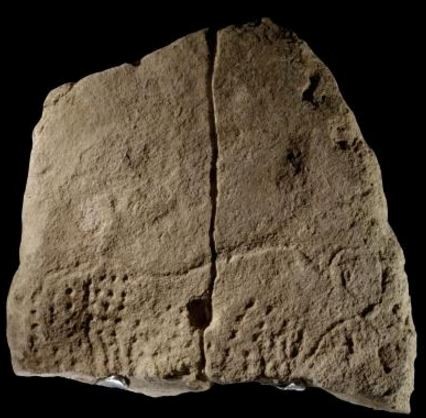An international team of anthropologists has uncovered a 38,000 year-old engraved image made by the "Aurignacian Culture," a civilization considered the earliest modern human culture in Europe and that first appeared in 43,000 BP (Before the Present).
The image was found in a southwestern French rock shelter at Abri Blanchard, and is one of the earliest known graphic imagery found in Western Eurasia. Scientists said the image offers insights into the nature of modern humans during this period.
The image is on a slab bearing a complex image of an aurochs, an extinct wild cow, surrounded by rows of dots. NYU anthropologist Randall White, who led the excavation in France's Vézère Valley, and his team members began their methodical exploration of remaining deposits at the site in 2011, with the discovery occurring in 2012.
White contends that Aurignacian art offers a window into the lives and minds of its makers -- and into the societies they created.
"The discovery sheds new light on regional patterning of art and ornamentation across Europe at a time when the first modern humans to enter Europe dispersed westward and northward across the continent," said White.
The findings, which appear in the journal Quaternary International, center on the early modern humans' Aurignacian culture, which existed from 43,000 to 33,000 BP.
"Following their arrival from Africa, groups of modern humans settled into western and Central Europe, showing a broad commonality in graphic expression against which more regionalized characteristics stand out," said White.
"This pattern fits well with social geography models that see art and personal ornamentation as markers of social identity at regional, group, and individual levels."
Abri Blanchard and its sister site, Abri Castanet, previously excavated by White's team, have long been recognized as being among the oldest sites in Eurasia bearing artifacts of human symbolism.
Over time, hundreds of personal ornaments have been discovered, including pierced animal teeth, pierced shells, ivory and soapstone beads, engravings, and paintings on limestone slabs.



























